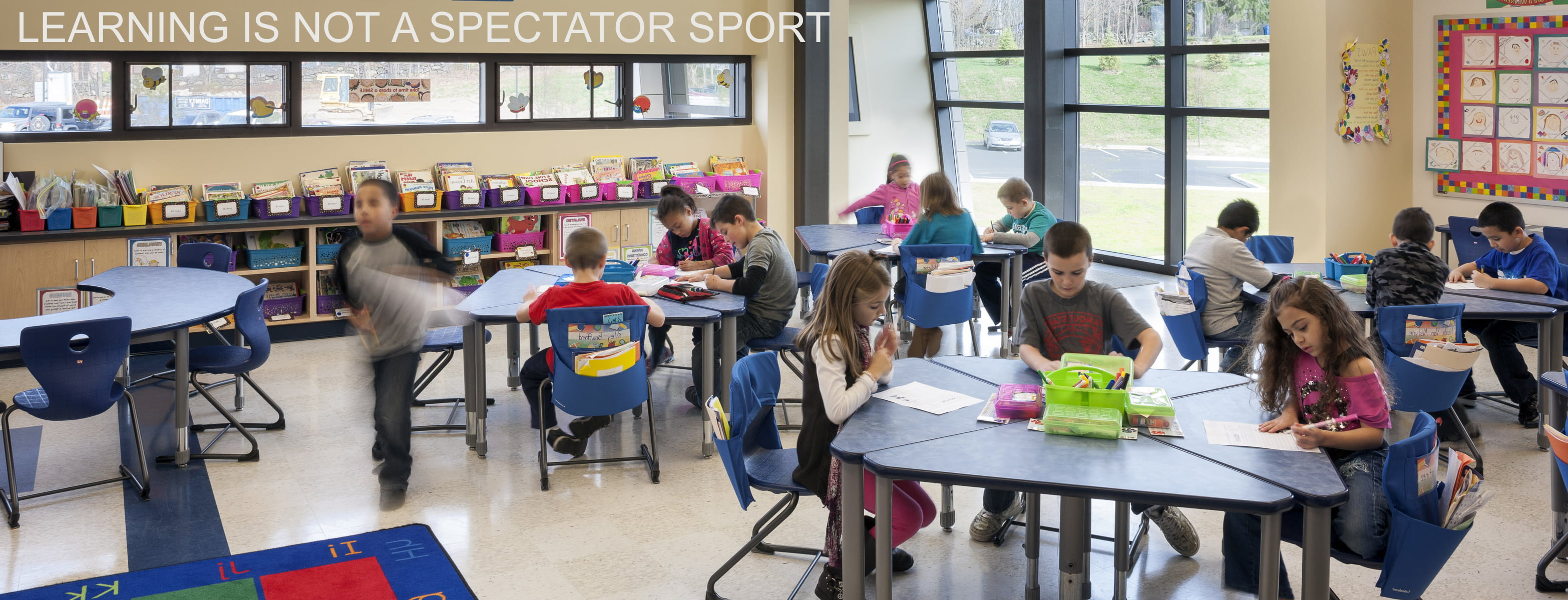Repurposing Educational Facilities for 21st Century Learning
Every day in America, 59 million of us go to school. Whether as students, teachers, or educational employees, each day we spend time in the nation’s 120,000 school buildings. Of these buildings, nearly 75% were built before 1970. This aging infrastructure often poses physical, operational, and educational challenges to our nation’s students and educators. Our ability to revitalize our aging school infrastructure positions our educational environments to successfully address the needs of 21st century learning.
Understanding the construction technologies and methods of decades past informs us as we reconsider, repurpose, and reshape these facilities for future use. Maybe not surprisingly, the same qualities and characteristics that have made these school buildings durable and long-lasting, also make modifying them challenging for today’s educational designer. The most daunting challenges are primarily due to changes in construction techniques, in technological requirements, and in educational delivery. Each of these challenges must be addressed to allow existing school facilities to be reused and repurposed to successfully meet 21st century educational needs.
Robust construction techniques of the past can prove to be a significant hurdle in delivering rehabilitated educational facilities that meet today’s environmental expectations. Masonry wall construction, limited ceiling plenums, and minimal floor to floor heights, are a few examples of challenges that make the incorporation of modern-day heating, cooling, technology, and electrical systems difficult. One may then ask:
Why recycle our facilities?
In the US alone, an estimated 251 million tons of consumer solid waste is generated
annually. Less than a third is recycled or composted. As much as 40% of this waste comes from the construction industry, with billions of tons of demolished facilities piling up in our landfills worldwide. Facility re-purposing, instead of new construction, offers a way to lessen this environmental impact.
Expectations are high. Building users demand that recycled facilities work as comfortably, and efficiently as their new construction counterparts. As an example, thermal comfort must be delivered in the educational environment, built new or not. Finding ways to deliver state-of-the-art heating and cooling can be challenging within the physical constraints of an existing structure. For example, the HVAC system approach can greatly impact the ability of a that system to fit within an older building construction. Today’s Variable Refrigerant Volume (VRV) systems require far less dimensional space as compared to forced air alternatives, and often serve as a good choice for this type of rehabilitation. VRVs also afford the possibility of transferring cooled refrigerant to an overheated part of a building while simultaneously transferring warmed refrigerant back to the cooler side of the building. This example is one of many ways to meet today’s expectations of year-round comfort while working within the tight constraints of yesterday’s minimally-sized building envelopes. By applying modern technologies, we can reuse old envelopes, avoid unnecessary demolition, and save the expense of new construction, while still supporting education.
Delivering HVAC, electrical, and technology in ways capable of meeting 21st century educational environment expectations is a base-line requirement in determining the success of a facility reuse. Similarly, today’s educational needs are very different from those at the time when these buildings were constructed. Spaces supporting project-based learning, collaborative learning, and a variety of learning styles are what our school facilities need today. Finding creative ways to introduce openness and flexibility are key to the success of a repurposed educational environment.
 “Learning is not a spectator sport.” This quote from D. Blocher becomes increasingly relevant as we embrace today’s educational setting. Considering Blocher’s position while revitalizing our environments, informs us that our creativity has a significant impact on developing places for education that are supportive of learning in the many forms that it takes. Our ability to re-purpose facilities to meet these educational needs allows us to save the embedded energy of existing buildings, and breathe new life into these facilities as they are reset to meet the needs of 21st century learning.
“Learning is not a spectator sport.” This quote from D. Blocher becomes increasingly relevant as we embrace today’s educational setting. Considering Blocher’s position while revitalizing our environments, informs us that our creativity has a significant impact on developing places for education that are supportive of learning in the many forms that it takes. Our ability to re-purpose facilities to meet these educational needs allows us to save the embedded energy of existing buildings, and breathe new life into these facilities as they are reset to meet the needs of 21st century learning.
__________________________________________________________________________________________
Resources:
IES National Center for Education Statistics publication, “Condition of America’s Public School Facilities: 2012 –13”
National Center for Educational Statistics Website https://nces.ed.gov/fastfacts/display.asp?id=84

